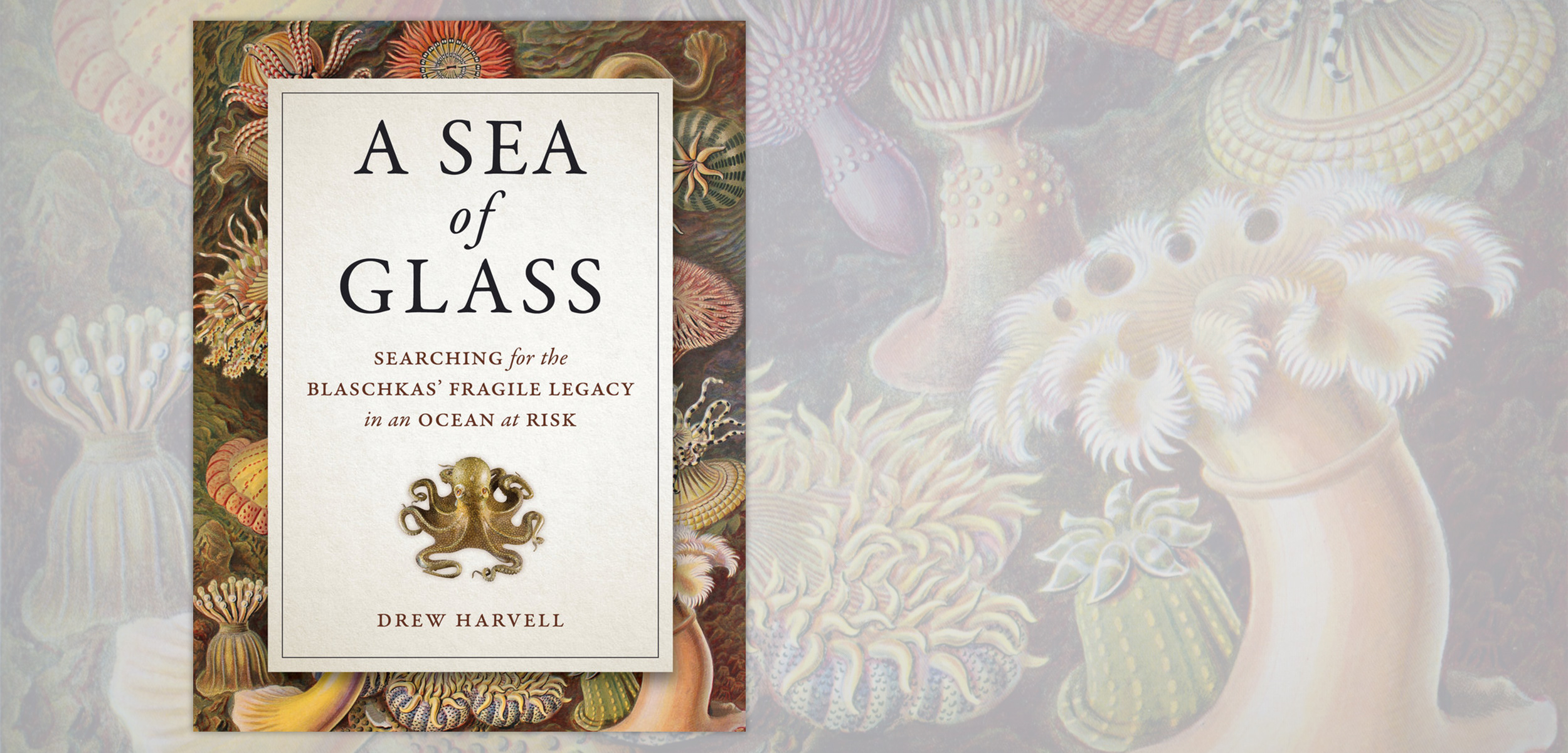Book Review: A Sea of Glass
A professor of ecology and evolutionary biology details the quest to uncover living matches to 19th-century glass models.
Article body copy
Anyone who has ever stood before the work of 19th-century father-son glassmaking duo Leopold and Rudolf Blaschka will understand how their exquisite pieces inspire obsessions that can span years. I first saw the Blaschkas’ work at Corning Museum of Glass in Corning, New York, while writing a travel guidebook in 2013, and I couldn’t get the delicate Loligopsis veranii out of my mind. The technique was unquestionably intricate, yes, but so was the model’s anatomy: a fragile, crystalline rendering so perfect that it looked as if the squid might come to life before my eyes, its display case transforming magically into an aquarium. I had to see more, and I ended up visiting Harvard University’s collection of Blaschka glass in 2014, and writing a feature about it. In the process, I met many people who have devoted years of their own lives to the Blaschkas’ work.
The appeal of Drew Harvell’s A Sea of Glass: Searching for the Blaschkas’ Fragile Legacy in an Ocean at Risk was thus immediate to me. Harvell, a professor of ecology and evolutionary biology at Ithaca, New York’s Cornell University, which is the other US institution with a large collection of Blaschka glass (Harvell is curator of this collection), was inspired to travel around the world to pristine and degraded dive sites in a quest to find specimens that would serve as “living matches” to the Blaschka models. The Blaschkas lived in landlocked Dresden, Germany, but produced more than 800 marine invertebrate models (and also an extensive collection of plants and flowers, which is the strength of the Harvard collection), whose fidelity to their real-life counterparts is stunning. Harvell wanted to determine how many of the species depicted in the Blaschkas’ glass could still be found in the world’s oceans today, more than 150 years later.
Harvell’s journey, documented in A Sea of Glass, was by turns thrilling and, more often, troubling. While she and cameraman David Brown (who worked with Harvell on a documentary, Fragile Legacy) found remarkable marine diversity in parts of the Mediterranean, living specimens spotted underwater were often in designated refuges, not in the open—and often overfished—sea. The despair she felt during her Indonesia dives is palpable, particularly in a fraught exchange with a local octopus hunter. Neither speaking the other’s language, Harvell tries to express her desire to see a living octopus, but the hunter misunderstands, spearing first one octopus and then another, presenting them to Harvell, who feels complicit in the cephalopods’ deaths, questioning her own motives as a scholar and conservationist.
Harvell’s encounters with rarer creatures of the deep are as exciting for the reader as they were for her, but the takeaway from A Sea of Glass is an SOS call for a change in human behavior. Harvell can be more finger-wagging than inspirational when she details the destruction we’ve already wrought and that which is to come if we don’t course-correct, but her dives around the world give her more right than others to issue a call to action. After all, she’s seen firsthand how much devastation has occurred in our seas in the century and a half since the Blaschkas produced their models.
A Sea of Glass: Searching for the Blaschkas’ Fragile Legacy in an Ocean at Risk
By Drew Harvell
232 pp. University of California Press

